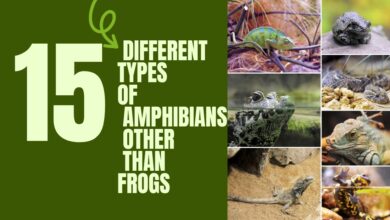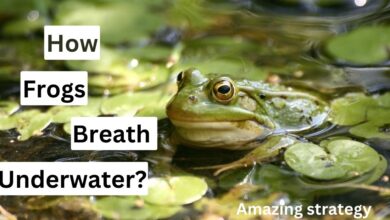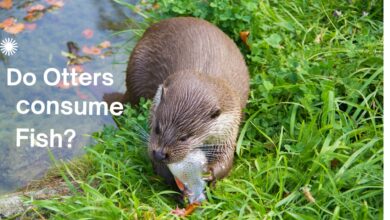8 Different types of Poisonous Frogs in America
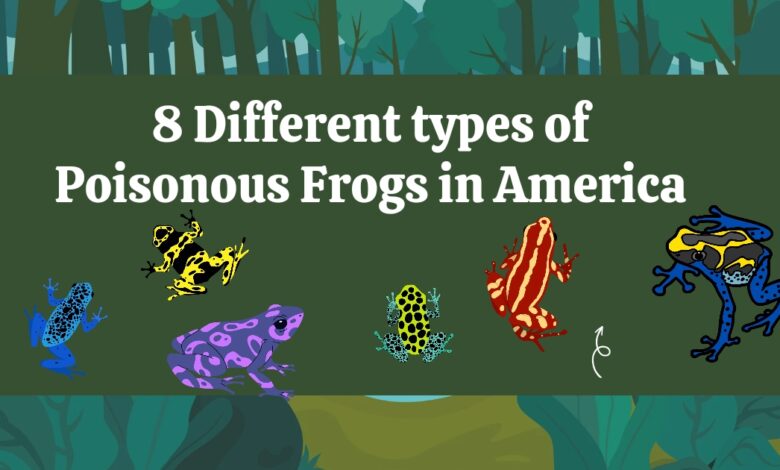
8 Different types of Poisonous Frogs in America
In the lush and diverse landscapes of the Americas, a fascinating array of colorful and toxic frogs captivate the imagination. Poison dart frogs, also known as poison arrow frogs, are a group of amphibians renowned for their vibrant hues and potent skin toxins. These small, jewel-toned wonders inhabit tropical rainforests and varying ecosystems across Central and South America.
Renowned for their dazzling appearances and potent chemical defenses, these frogs have evolved a remarkable array of colors and patterns that warn potential predators of their toxicity. In this exploration, we delve into the intriguing world of eight distinct types of poisonous frogs, each showcasing its unique characteristics, behaviors, and adaptations for survival in their captivating environments.
Here are some types of Poisonous frogs found in Columbia, and around the American:
1. Golden Poison Dart Frog
The Golden Poison Dart Frog (Phyllobates terribilis) is a highly toxic amphibian native to the rainforests of western Colombia. Here are some key features:
Coloration: These frogs are known for their vibrant golden-yellow skin, which serves as a warning to predators of their toxicity.
Size: Typically, they are small, measuring about 2 to 5 centimeters in length.
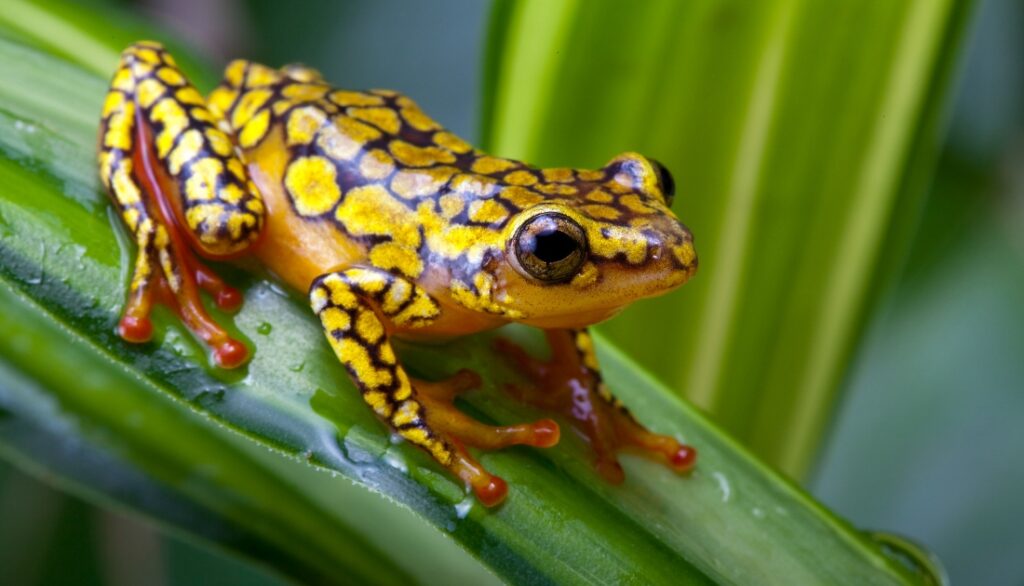
Toxicity: Phyllobates terribilis is considered one of the most poisonous animals on Earth. The skin secretions of these frogs contain potent neurotoxins, such as batrachotoxin, which can cause paralysis or death.
Habitat: They inhabit the rainforests, often found on the forest floor. They are associated with humid environments.
Diet: In the wild, their toxicity is believed to be derived from their diet, which includes small invertebrates like ants and mites.
Behavior: These frogs are diurnal and are known for their bright coloration, which serves as a warning to predators. They are also territorial.
See Also: 10 Different types of animals similar to sloth
It’s important to note that in captivity, where they are not exposed to their natural diet, these frogs are not as toxic. Always exercise caution and adhere to ethical practices when dealing with such animals.
2. Blue Poison Dart Frog
The Blue Poison Dart Frog (Dendrobates azureus) is a brightly colored and toxic amphibian native to the rainforests of Suriname and Southern Guyana. Here are some key characteristics:
Coloration: These frogs are known for their striking blue skin with black spots, making them one of the most vividly colored poison dart frogs.
Size: They are relatively small, typically ranging from 1.5 to 5 centimeters in length.
Toxicity: Like other poison dart frogs, Dendrobates azureus secretes potent neurotoxins through its skin, which is believed to be derived from its diet in the wild.
Habitat: They inhabit the tropical rainforests, often found near small streams or water sources.
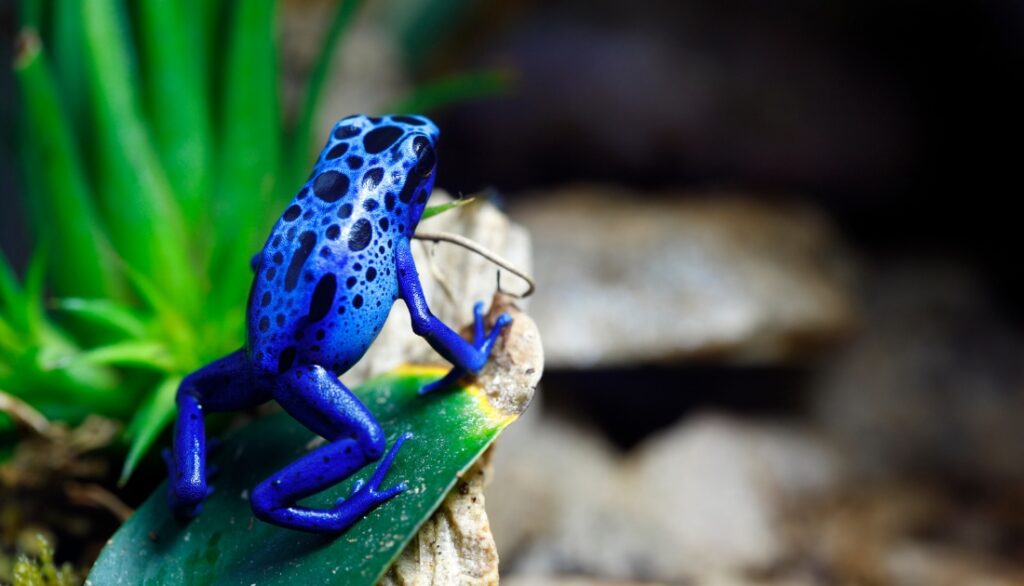
Diet: In the wild, their diet includes small invertebrates like ants and termites. The toxins they produce are thought to be acquired from their natural food sources.
Conservation Status: Dendrobates azureus is classified as “Near Threatened” due to habitat loss and collection for the pet trade.
These frogs are admired for their vibrant colors but should be handled with caution due to their potent toxins. In captivity, where their diet may differ from their natural habitat, their toxicity is generally reduced. Always prioritize ethical practices when dealing with exotic pets.
3. Strawberry Poison Dart Frog
The Strawberry Poison Dart Frog (Oophaga pumilio) is a small and brightly colored amphibian native to Central America. Here are some notable features:
Coloration: These frogs exhibit a vibrant and variable range of colors, including bright red, blue, green, orange, and yellow. The strawberry morph is well-known for its red coloration.
Size: They are generally small, with adults measuring around 1.5 to 2.5 centimeters in length.
Toxicity: Despite their small size, these frogs produce potent toxins. In the wild, these toxins are acquired from their diet, primarily consisting of small arthropods like ants and mites.
Habitat: Strawberry Poison Dart Frogs are found in the rainforests of Central America, including regions in Panama and Costa Rica. They inhabit the forest floor and are often associated with leaf litter.
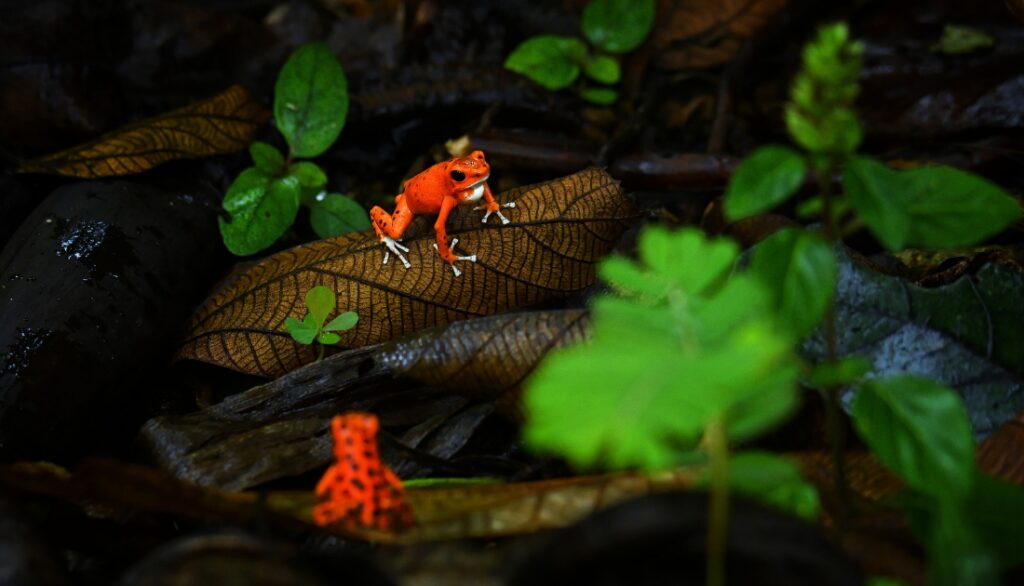
Behavior: These frogs are diurnal (active during the day) and are known for their interesting parental care behaviors. Females lay their eggs on the forest floor, and males guard and care for the developing tadpoles.
Conservation Status: The conservation status of Oophaga pumilio varies across its range. Different populations may face threats such as habitat loss, climate change, or collection for the pet trade.
Strawberry Poison Dart Frogs are admired for their stunning colors, but their toxicity makes them unsuitable as pets for inexperienced keepers. Proper care and ethical practices are essential in maintaining these species in captivity.
4. Dyeing Poison Dart Frog
The Dyeing Poison Dart Frog (Dendrobates tinctorius) is a species known for its vibrant colors and toxic skin secretions. Here are some key characteristics:
Coloration: These frogs exhibit a wide range of colors, including vibrant blues, yellows, greens, and blacks. The variety of color morphs within the species is extensive, and different locales may have distinct color patterns.
Size: Adult Dyeing Poison Dart Frogs are relatively small, typically measuring between 4 to 5.5 centimeters in length.
Toxicity: Like other poison dart frogs, they secrete toxins through their skin. In the wild, these toxins are derived from their diet, which often includes ants, mites, and other small invertebrates.
Habitat: They are native to the tropical rainforests of South America, with their range covering parts of Brazil, Suriname, and French Guiana. They are primarily found on the forest floor or on low vegetation.
Behavior: Dendrobates tinctorius is diurnal, being active during the day. They are known for their complex social behaviors, including territoriality and courtship rituals.
Conservation Status: The conservation status of Dendrobates tinctorius can vary based on specific populations and locales. Threats include habitat loss, climate change, and potential collection for the pet trade.
Cultural Significance: Indigenous people in some regions of South America have used extracts from these frogs to create blowgun darts for hunting, which is where the name “dart frog” originates.
Due to their captivating colors and patterns, Dyeing Poison Dart Frogs are often kept in captivity by experienced amphibian enthusiasts. However, they require specialized care, and captive-bred individuals are preferred to reduce the impact on wild populations.
5. Black-legged Dart Frog
The Black-legged Dart Frog (Phyllobates bicolor) is a species known for its striking appearance and toxic skin secretions. Here are some key features:
Coloration: These dart frogs are known for their vibrant coloration. They typically have a bright or contrasting body color, often ranging from yellow or orange to green, with distinctive black markings on their legs.
Size: Adult Black-legged Dart Frogs are relatively small, usually measuring around 4 to 5 centimeters in length.
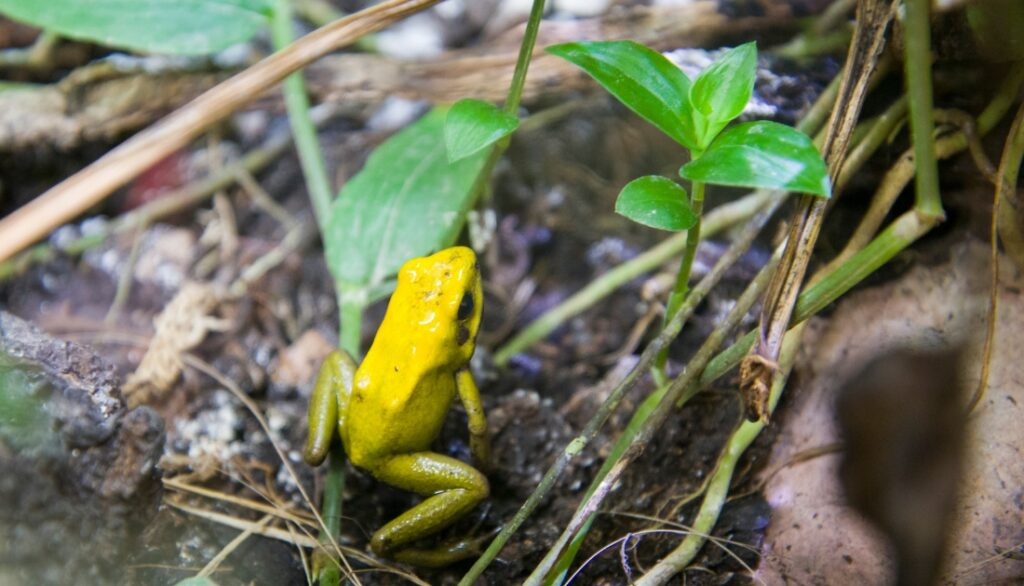
Toxicity: Like other poison dart frogs, they possess skin toxins that serve as a defense mechanism against predators. These toxins are derived from their diet, particularly ants, which contribute to the potent chemicals found in their skin secretions.
Habitat: Indigenous to parts of Central and South America, including Panama and Colombia, these frogs inhabit tropical rainforests. They are primarily found on the forest floor, often near streams or wet areas.
Behavior: Phyllobates bicolor is diurnal, meaning they are active during the day. They exhibit interesting behaviors such as territoriality and courtship rituals.
Conservation Status: The conservation status of this species can vary, but habitat destruction and collection for the pet trade are potential threats. Some populations may face challenges due to deforestation and environmental changes.
Cultural Significance: Historically, indigenous peoples in certain regions have used extracts from these frogs to poison blowgun darts for hunting.
Due to their vibrant colors and interesting behaviors, Black-legged Dart Frogs are sometimes kept in captivity by experienced amphibian keepers. However, their care requires specific conditions, and captive breeding is encouraged to avoid impacting wild populations.
6. Green and Black Poison Dart Frog
The Green and Black Poison Dart Frog (Dendrobates auratus) is a visually striking species known for its vibrant colors and toxic skin secretions. Here are some characteristics of this frog:
Coloration: As the name suggests, these dart frogs exhibit a combination of green and black colors. The patterns and intensity of these colors can vary among individuals, contributing to their overall attractiveness. The vibrant hues serve as a warning to potential predators about their toxicity.
Size: Adult Green and Black Poison Dart Frogs are relatively small, typically ranging from 2 to 5 centimeters in length.
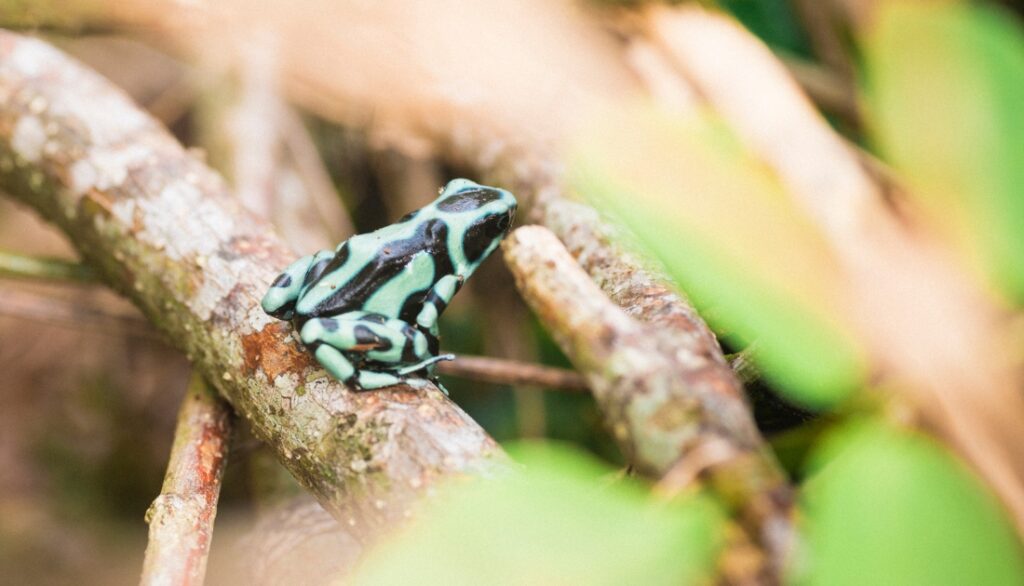
Toxicity: Like other poison dart frogs, Dendrobates auratus produces skin toxins as a defense mechanism. These toxins, such as alkaloids, are derived from their diet of small arthropods, particularly ants. In captivity, where their diet changes, the toxicity may decrease.
Habitat: Indigenous to Central America and northwestern parts of South America, including regions like Costa Rica, Panama, Nicaragua, and Colombia, they inhabit tropical rainforests. These frogs can be found in various microhabitats, including leaf litter, vegetation, and near water sources.
Behavior: Dendrobates auratus is diurnal, meaning it is active during the day. They are known for their agile and territorial behavior. Courtship and mating involve intricate displays and vocalizations.
Conservation Status: The conservation status of this species can vary across its range. Like many amphibians, habitat destruction and fragmentation pose threats, and there are concerns about declines in some populations.
Captive Keeping: Due to their attractive colors, Green and Black Poison Dart Frogs are sometimes kept in captivity by experienced amphibian enthusiasts. However, it’s crucial to provide appropriate conditions and consider ethical sourcing to avoid impacting wild populations. Captive breeding efforts are encouraged.
It’s important to note that the information provided may be subject to updates, and local regulations regarding the keeping of exotic species should be followed.
7. Imitating Poison Dart Frog
The Imitating Poison Dart Frog (Ranitomeya imitator) is a fascinating species known for its mimicry and vibrant colors. Here are some characteristics of this dart frog:
Mimicry: The name “imitator” reflects its remarkable ability to mimic the coloration and patterns of other poison dart frog species within its range. This mimicry is believed to be a form of protective adaptation, as potential predators associate the vibrant colors with toxicity.
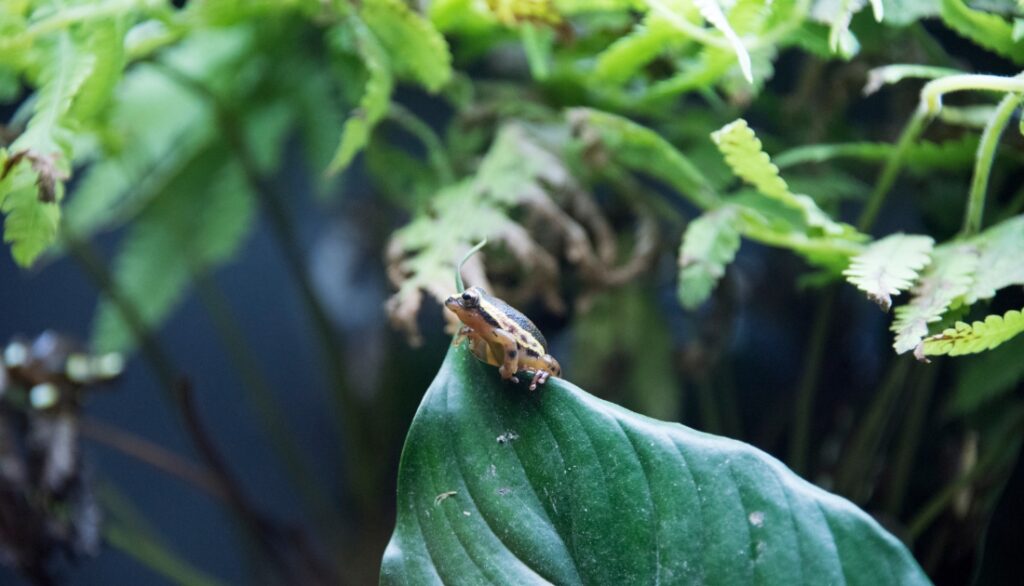
Coloration: Ranitomeya imitator exhibits a variety of color morphs, each resembling different toxic species. These colors can include shades of red, blue, green, and black. The mimicry extends to the intricate patterns on their skin.
Size: Like many poison dart frogs, they are relatively small, typically measuring around 1 to 2 centimeters in length.
Toxicity: While not as toxic as some other poison dart frogs, Ranitomeya imitator does produce skin toxins, mainly alkaloids. These toxins are acquired from their diet, primarily consisting of small arthropods like ants.
Habitat: Indigenous to parts of Central and South America, including regions of Peru and Ecuador, they inhabit rainforests with a preference for leaf litter, vegetation, and low shrubs.
Behavior: Ranitomeya imitator is diurnal, meaning it is active during the day. They are known for their agility and territorial behavior. Courtship and mating involve complex displays and vocalizations.
Conservation Status: The conservation status may vary among different populations and color morphs. As with many amphibians, habitat loss and potential threats from the pet trade can impact their populations. Conservation efforts, including habitat protection and responsible captive breeding, are crucial.
Captive Keeping: Ranitomeya imitator is occasionally kept in captivity by experienced amphibian enthusiasts. Captive breeding programs contribute to conservation efforts, and proper care, including a well-designed enclosure and appropriate diet, is essential.
Always check and adhere to local regulations regarding the keeping of exotic species, and consider the ethical sourcing of animals to avoid contributing to the illegal wildlife trade.
8. Yellow-banded Poison Dart Frog
The Yellow-banded Poison Dart Frog, scientifically known as Dendrobates leucomelas, is a captivating amphibian native to the lush rainforests of Venezuela and parts of Brazil. Renowned for its striking coloration, this small but potent frog features a vivid yellow body adorned with contrasting black bands or spots. The vibrant patterns serve as a warning to potential predators, indicating the presence of toxic alkaloids within its skin.
Measuring about 3 to 5 centimeters in length, these frogs exhibit bold and contrasting coloration, a phenomenon known as aposematism, which signals danger to predators. The toxins present in their skin, including alkaloids like epibatidine, make them one of the most poisonous creatures on Earth. Local indigenous peoples historically used their toxic secretions to poison blowgun darts for hunting, giving rise to their common name.
Despite their small size, Yellow-banded Poison Dart Frogs are agile climbers and spend much of their time among leaf litter or low vegetation. Their unique coloration, toxic defense mechanism, and fascinating behaviors contribute to their allure as one of the enchanting members of the poison dart frog family.
